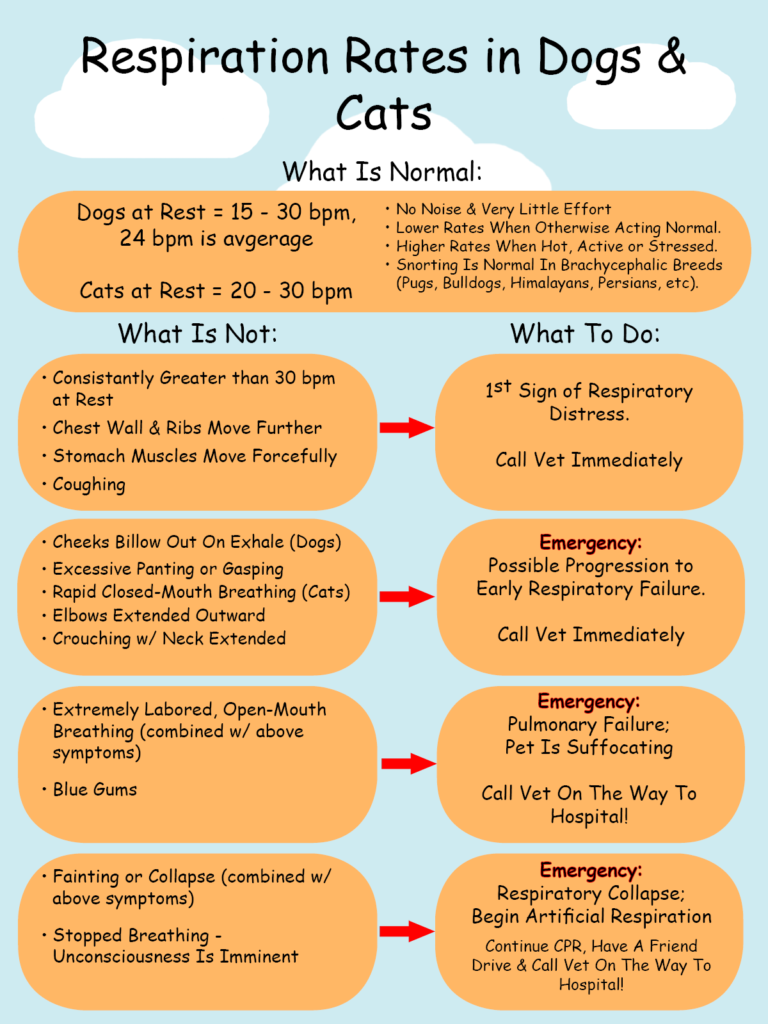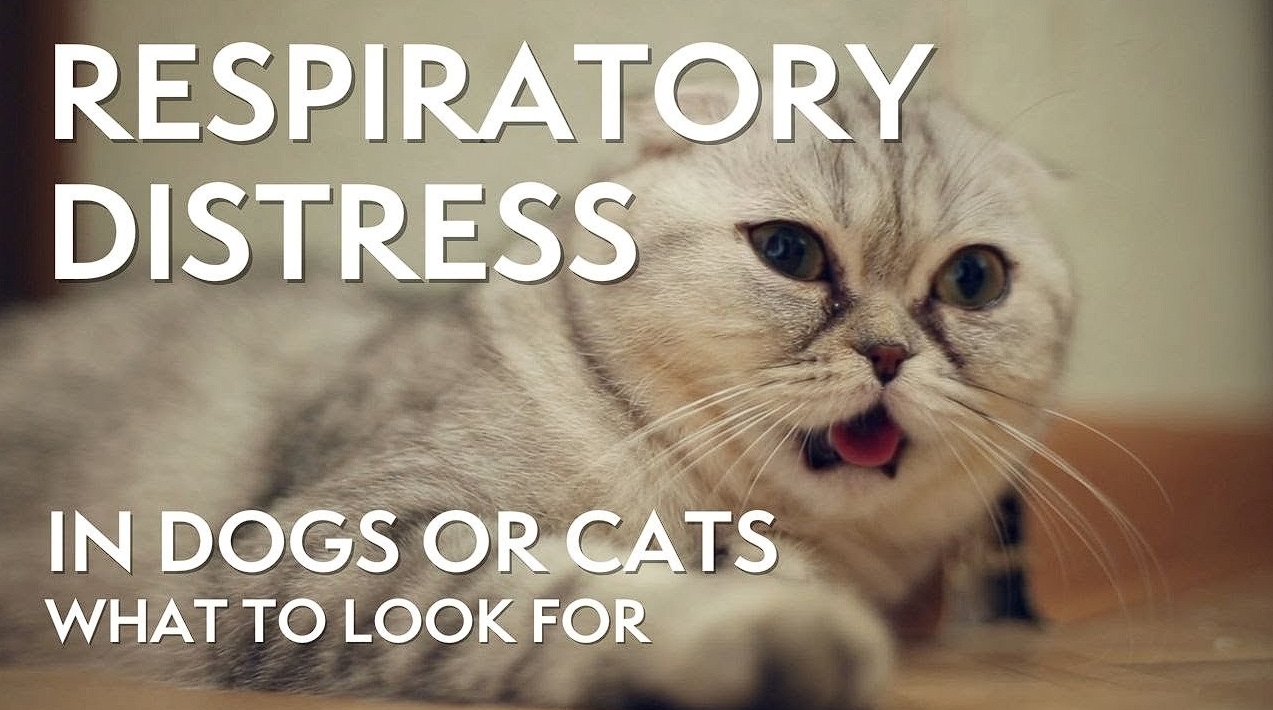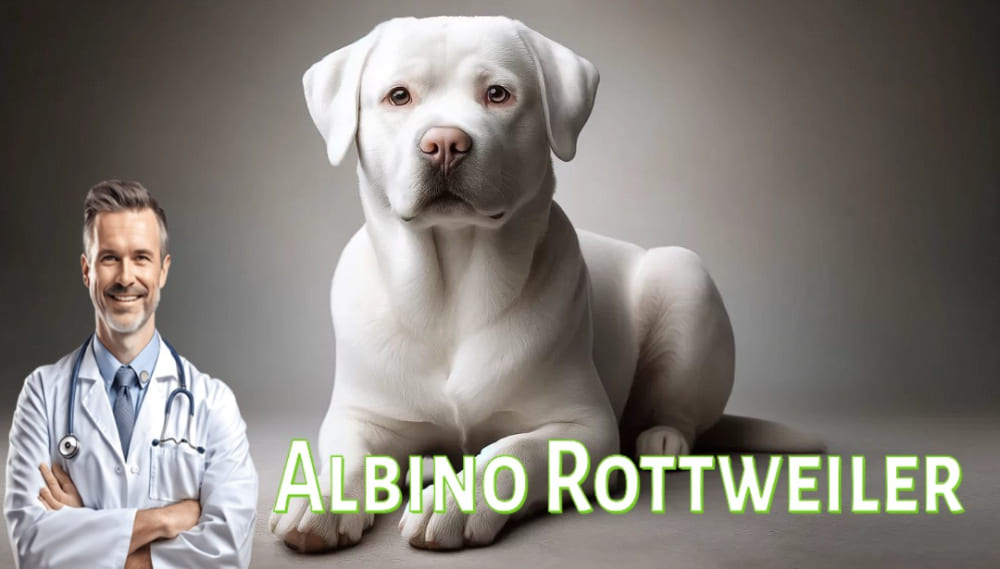Dog respiratory rates fall between 10 to 35 breaths per minute and average at 24 breaths per minute. Domestic cats exhibit breathing patterns between 20 and 40 breaths per minute. Medical consultation with potential artificial respiration intervention will probably be required when your resting pet exhibits any abnormal breathing pattern.
As with all the vital signs, you should become familiar with what your pet’s normal rate of respiration is when he is resting & relaxed, and also when he has been active, so you will be able to notice more quickly when something may be wrong. Periodically doing your own ‘health checks’ on your pets can help you achieve this.
How To Check Your Pet’s Respiration Rate:
- To check your pet’s resting respiration rate, simply count his chest movements over a 60 second period, or a 15 second period and multiply it by four.
- This will give his number of breaths per minute (bpm).
- **Keep in mind that the same abbreviation is used for beats per minute when checking heart rate, so don’t confuse those numbers in your records.
Download our Normal Vital Signs Record to document your pet’s vital signs. If you have multiple pets, print and fill out a record for each pet and keep it in their medical file.
Heat or physical activity or nervousness of your pets will increase their respiratory rate to 200 breaths per minute. Act according to the necessary steps shown in the table when your dog presents with unexplained panting mixed with any of the symptoms listed there. Unexplained slow or shallow breathing requires immediate veterinary attention in both dogs and cats. Treat any unusual breathing pattern by closely observing the animal to establish if medical attention is required.
Cats show panting and mouth breathing as warning signs because they lack the ability of dogs to use panting to regulate temperature. Contact your veterinarian immediately whenever your cat exhibits the above symptoms.
Respiratory disorders in cats are difficult to detect because they purr so much and are solitary animals that hide from other animals. Any abnormal behavior should be brought to your attention, as it could indicate a respiratory problem.
Respiratory Symptoms In Both Dogs And Cats:






